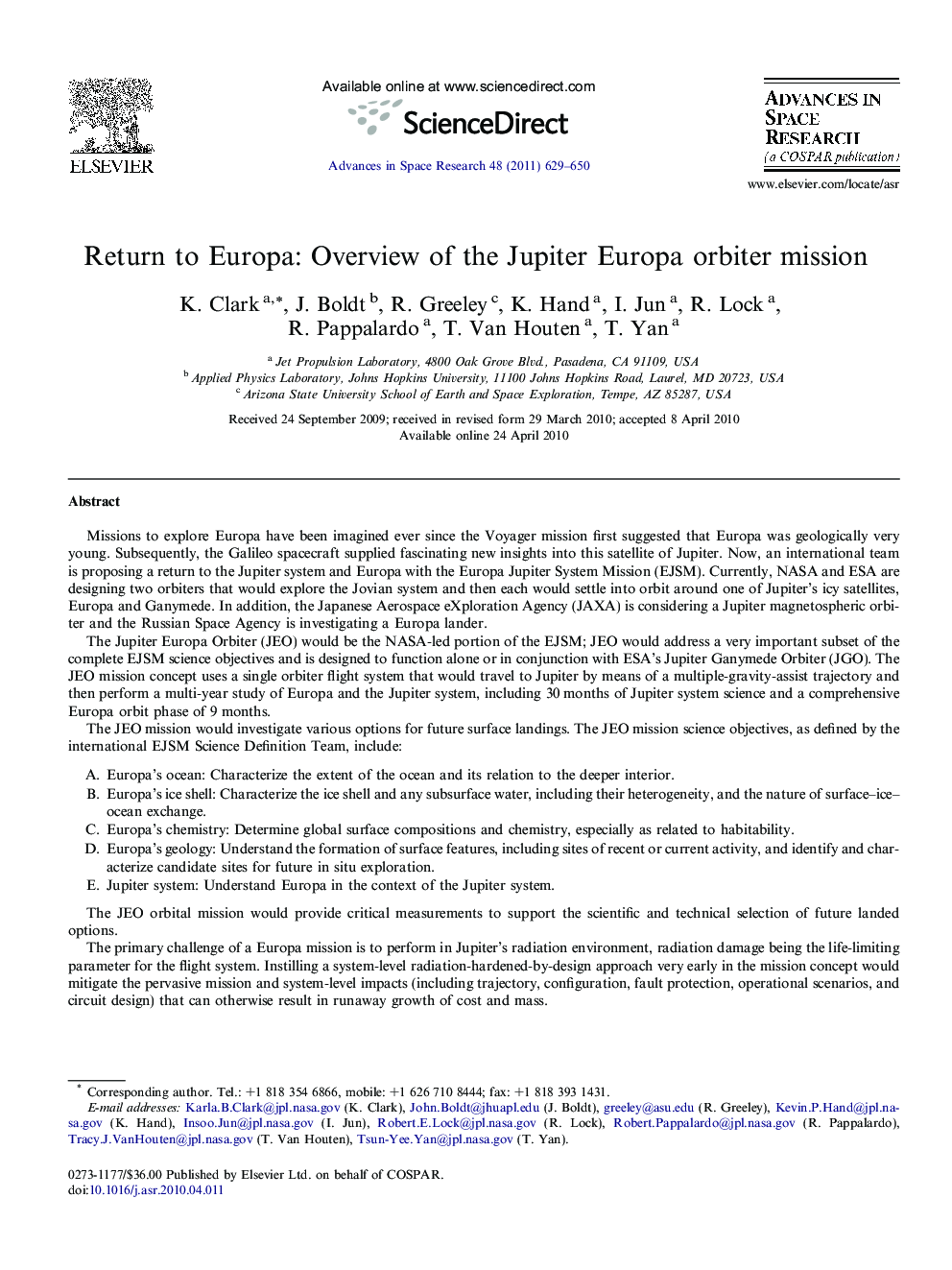| کد مقاله | کد نشریه | سال انتشار | مقاله انگلیسی | نسخه تمام متن |
|---|---|---|---|---|
| 1765833 | 1020122 | 2011 | 22 صفحه PDF | دانلود رایگان |

Missions to explore Europa have been imagined ever since the Voyager mission first suggested that Europa was geologically very young. Subsequently, the Galileo spacecraft supplied fascinating new insights into this satellite of Jupiter. Now, an international team is proposing a return to the Jupiter system and Europa with the Europa Jupiter System Mission (EJSM). Currently, NASA and ESA are designing two orbiters that would explore the Jovian system and then each would settle into orbit around one of Jupiter’s icy satellites, Europa and Ganymede. In addition, the Japanese Aerospace eXploration Agency (JAXA) is considering a Jupiter magnetospheric orbiter and the Russian Space Agency is investigating a Europa lander.The Jupiter Europa Orbiter (JEO) would be the NASA-led portion of the EJSM; JEO would address a very important subset of the complete EJSM science objectives and is designed to function alone or in conjunction with ESA’s Jupiter Ganymede Orbiter (JGO). The JEO mission concept uses a single orbiter flight system that would travel to Jupiter by means of a multiple-gravity-assist trajectory and then perform a multi-year study of Europa and the Jupiter system, including 30 months of Jupiter system science and a comprehensive Europa orbit phase of 9 months.The JEO mission would investigate various options for future surface landings. The JEO mission science objectives, as defined by the international EJSM Science Definition Team, include:A.Europa’s ocean: Characterize the extent of the ocean and its relation to the deeper interior.B.Europa’s ice shell: Characterize the ice shell and any subsurface water, including their heterogeneity, and the nature of surface–ice–ocean exchange.C.Europa’s chemistry: Determine global surface compositions and chemistry, especially as related to habitability.D.Europa’s geology: Understand the formation of surface features, including sites of recent or current activity, and identify and characterize candidate sites for future in situ exploration.E.Jupiter system: Understand Europa in the context of the Jupiter system.The JEO orbital mission would provide critical measurements to support the scientific and technical selection of future landed options.The primary challenge of a Europa mission is to perform in Jupiter’s radiation environment, radiation damage being the life-limiting parameter for the flight system. Instilling a system-level radiation-hardened-by-design approach very early in the mission concept would mitigate the pervasive mission and system-level impacts (including trajectory, configuration, fault protection, operational scenarios, and circuit design) that can otherwise result in runaway growth of cost and mass.This paper addresses the JEO mission concept developed by a joint team from JPL and the Applied Physics Laboratory to address the science objectives defined by an international science definition team formed in 2008, while designing for the Jupiter environment.
Journal: Advances in Space Research - Volume 48, Issue 4, 16 August 2011, Pages 629–650